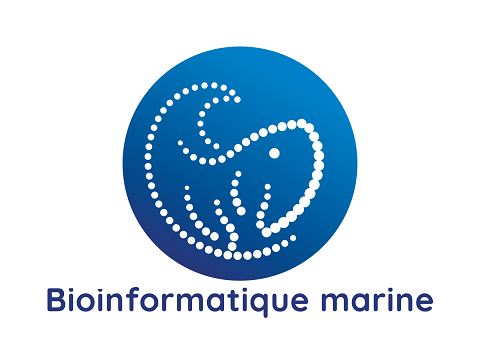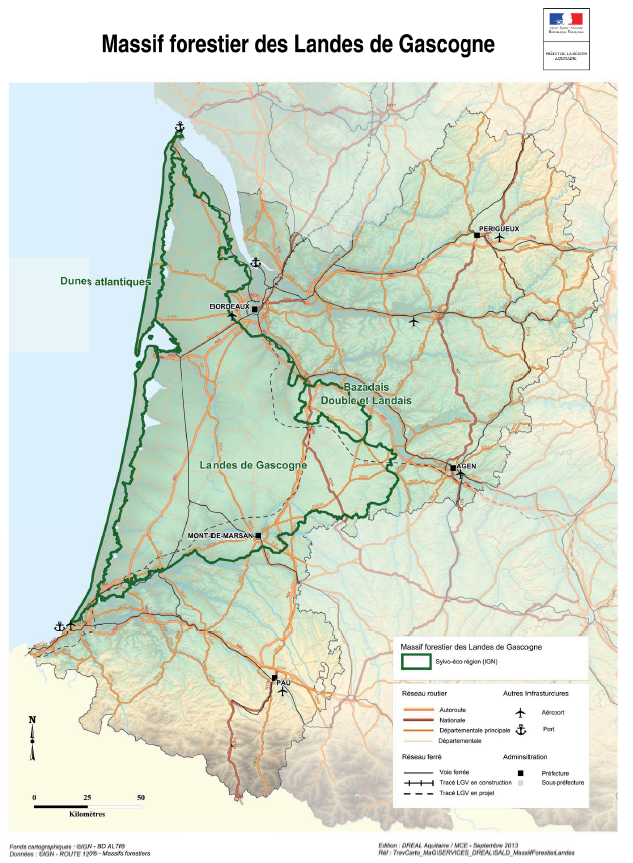environment
Type of resources
Available actions
Topics
Keywords
Contact for the resource
Provided by
Years
Formats
Representation types
Update frequencies
status
Scale
Resolution
-

Effets de la pollution atmosphérique industrielle sur la population de la presqu'île d'Ambès (ERS)
-

Les ministères chargés de l'écologie (Meeddm) et de l'agriculture (Maap) ont confié au Gip Ecofor une mission d'expertise collective scientifique et technique à visée prospective sur « l'avenir du massif forestier des Landes de Gascogne ». Son objectif est de mobiliser la connaissance autour d'options envisageables pour assurer l'avenir du massif forestier landais et de la partager avec l'ensemble des parties intéressées. Les document disponibles sont les rapports finaux des groupes de travail et d'experts.
-

Ce projet s’attache à étudier les phénomènes Natech imputables à des inondations/tsunami en considérant deux échelles spatiales d’analyse : l’échelle du site industriel et l’échelle du territoire. Ces deux échelles permettent d’appréhender la problématique des Natechs d’une part d’un point de vue essentiellement « vulnérabilité » et d’autre part, grâce à une analyse plus globale et profonde qui fait résonner la notion de résilience territoriale. Le travail est basé sur une analyse a posteriori (au Japon) et a priori (en France) des pratiques de gestion des événements Natech auprès des parties prenantes (industriels, collectivités, services de l’état…). Pour cela, en France et au Japon, des questionnaires, des visites et des entretiens ont été réalisés sur des territoires touchés ou potentiellement concernés par le phénomène Natech inondation/tsunami. Ces données sont employées : -à l’échelle du site industriel, pour modéliser l’impact du phénomène naturel sur l’installation (par le biais notamment d’arbres de défaillances), puis produire deux outils d’aide à la décision (diagnostic de l’Etude de danger et diagnostic du Plan d’Opération Interne lors d’un événement Natech inondation) -à l’échelle du territoire pour modéliser le processus Natech, identifier 3 zones de fragilité, définir 5 scénarios de choc. Puis, en considérant que la résilience globale d’un territoire dépend notamment de la résilience des acteurs qui le constituent proposer un outil d’audit des parties prenantes du territoire afin d’estimer la résilience de chacun d’entre eux, les pistes de progrès et, in fine, améliorer la résilience du territoire qui les héberge. Mots-clefs : Natech, Science du danger, arbres de défaillance, aide à la décision, résilience territoriale.
-

This dataset is the coastal zone land surface region from Europe, derived from the coastline towards inland, as a series of 10 consecutive buffers of 1km width each. The coastline is defined by the extent of the Corine Land Cover 2018 (raster 100m) version 20 accounting layer. In this version all Corine Land Cover pixels with a value of 523, corresponding to sea and oceans, were considered as non-land surface and thus were excluded from the buffer zone.
-

Metagenomic analysis of clams from Sanaga river in Cameroon to describe the virome
-

Successive infections with Vibrio harveyi were conducted in two populations of the European abalone in order to examine which genes may be involved in improved survival to the disease in the St. Malo population.
-

Présentation des entreprises, cartographie du risque et consignes en cas d'alerte pour les populations des communes de la Presqu'île d'Ambès. Plaquettes 4 ou 8 pages (avec cartographie)
-

Ces travaux ont été réalisés dans le cadre de la Directive Territoriale d'Aménagement et de Développement Durable (DTADD) portée par la Préfecture de la région ex-Aquitaine. La partie I de ces travaux porte sur les valeurs du massif forestier des Landes de Gascogne. Le massif est dépositaire d’importantes valeurs et fonctions non marchandes d’intérêt général notamment : paysagères, naturalistes, hydrologiques et climatiques. Ce rapport explique également que les modes de valorisation du territoire, autres que ceux liés à la production de bois d’œuvre et d’industrie, interfèrent étroitement avec la présence même de la forêt de production : l'activité touristique, l'arrivée de nouveaux habitants et l'économie induite, ainsi que le foncier forestier.
-

Ce document se décompose en deux parties: La première énonce les valeurs et fonctions du massif forestier communes à tous les acteurs concernés par son avenir. La seconde présente les pressions et les enjeux qui pèsent sur le massif forestier des Landes de Gascogne.
-

This dataset presents the resulting assessment grid (based on the EEA reference grid) with the classification of chemical status of the transitional, coastal and marine waters in the context of the Water Framework Directive (WFD) and the Marine Strategy Framework Directive (MSFD). This classification has been performed using the CHASE+ tool, with classifications of the matrices ‘water’, ‘sediment’ and ‘biota’ and indicators of ‘biological effects’, as well as an integrated classification of chemical status, combining results of all matrices. The chemical status is evaluated in five classes, where NPAhigh and NPAgood are recognised as ‘non-problem areas’ and PAmoderate, PApoor and PAbad are recognised as ‘problem areas’. This is the assessment made excluding concentrations of polybrominated diphenyl ethers (PBDEs) The overall area of interest used is based on the marine regions and subregions under the Marine Strategy Framework Directive. Additionally, Norwegian (Barent Sea and Norwegian Sea) and Icelandic waters (’Iceland Sea’) have been added (see Surrounding seas of Europe). Note that within the North East Atlantic region only the subregions within EEZ boundaries (~200 nm) have been included. This dataset underpins the findings and cartographic representations published in the report "Contaminants in Europe's Seas" (EEA, 2019): https://www.eea.europa.eu/publications/contaminants-in-europes-seas.
 Catalogue PIGMA
Catalogue PIGMA